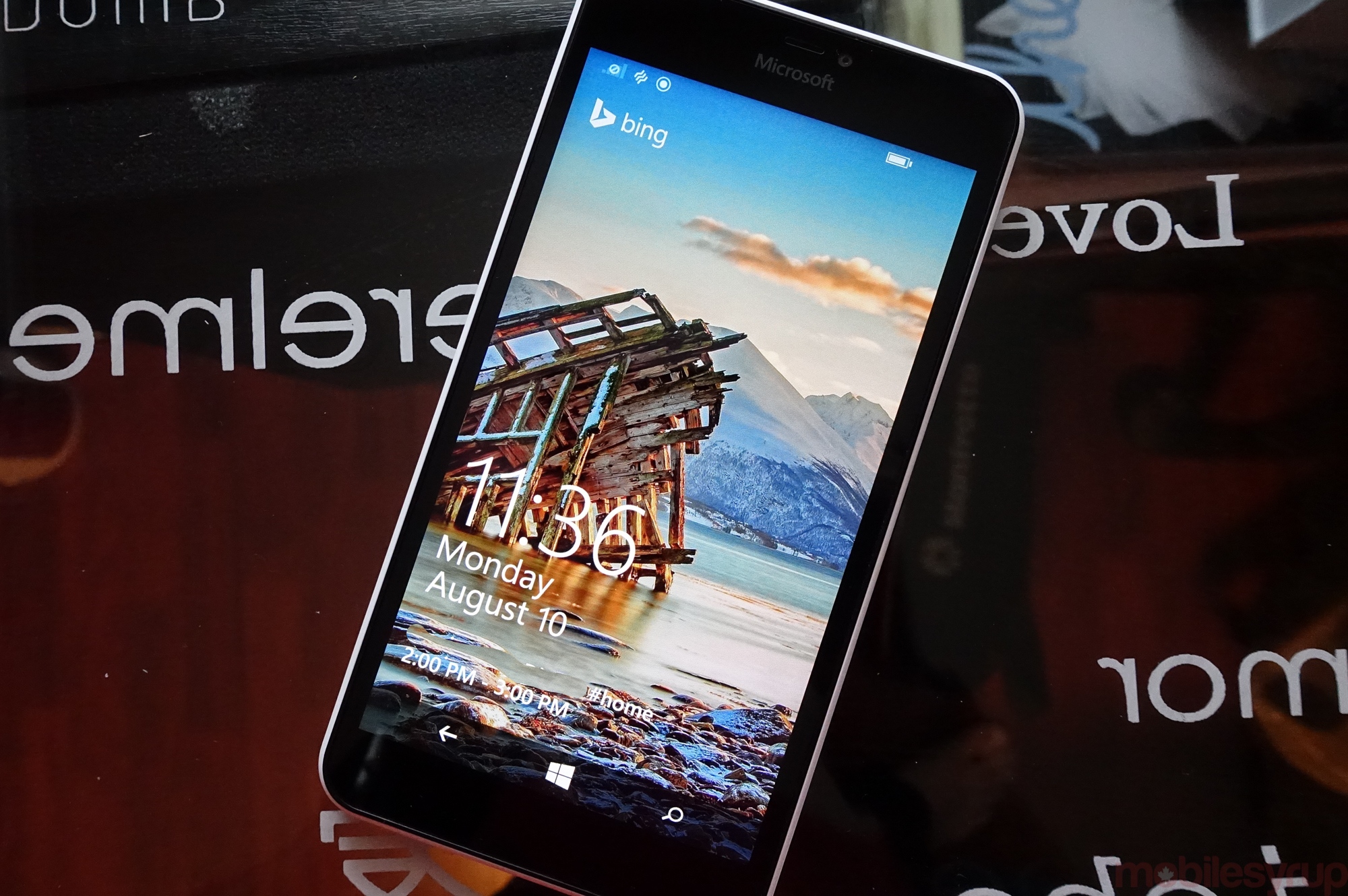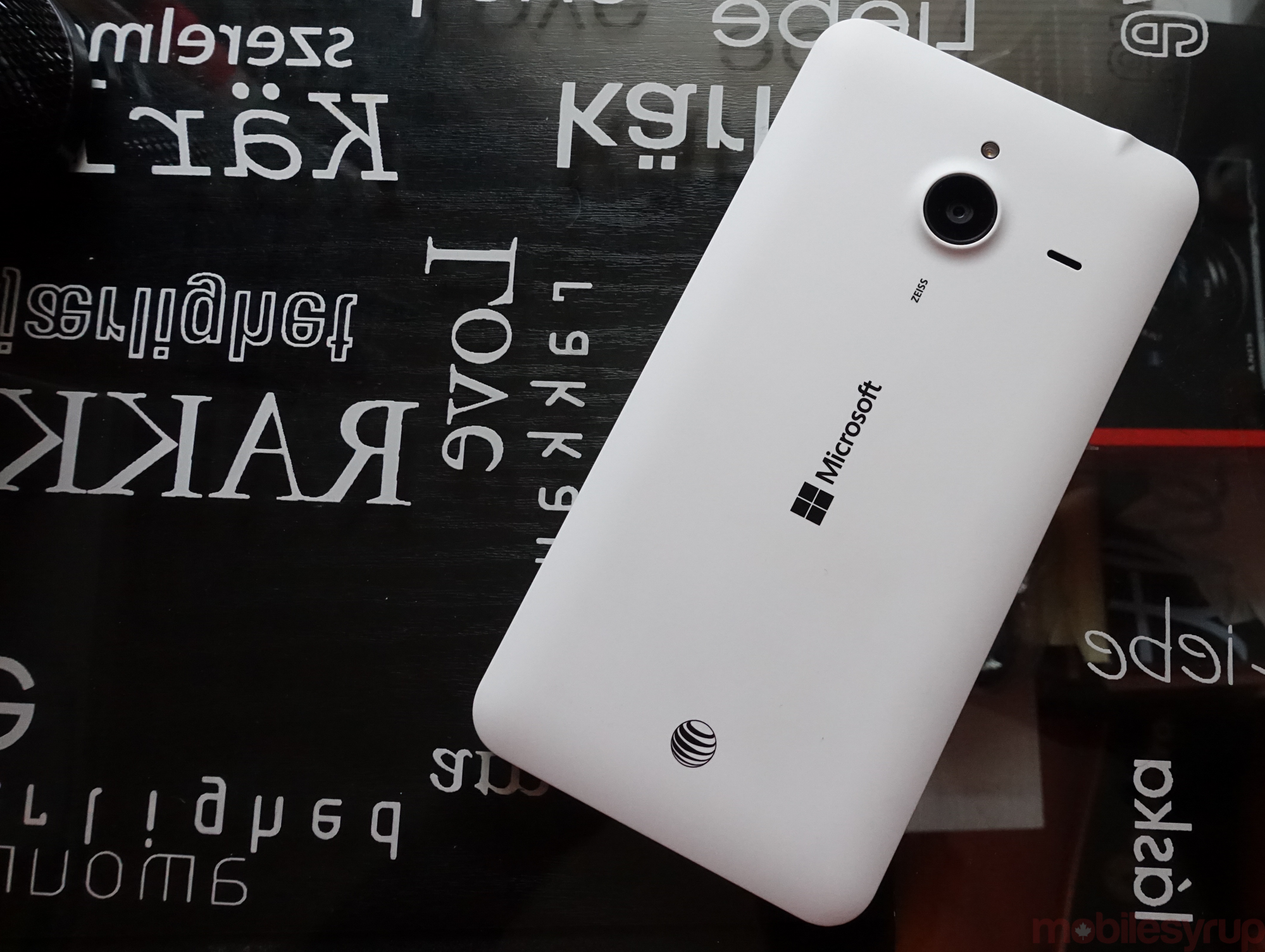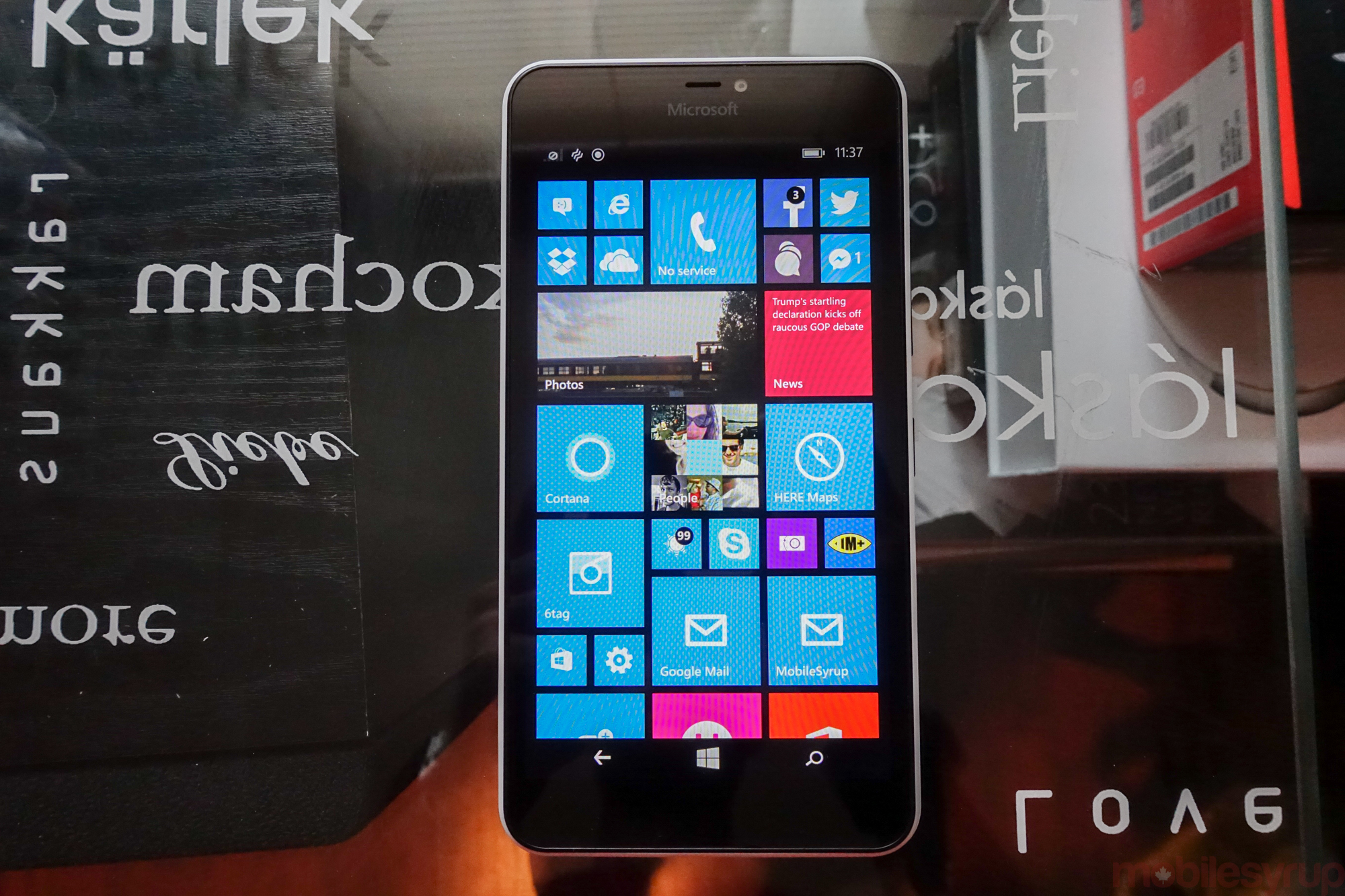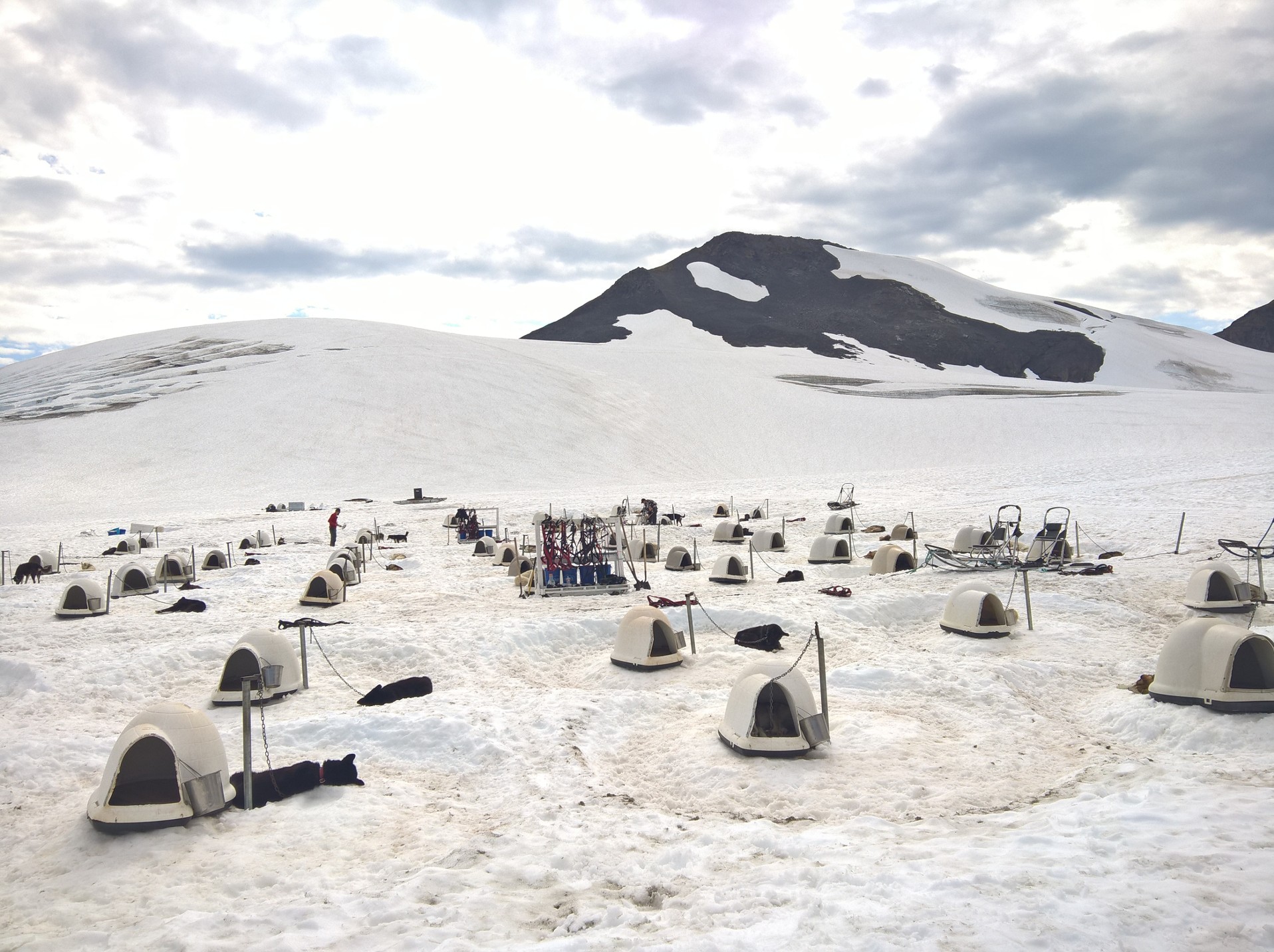
When the small cruise ship unmoored from the dock at Whittier’s sleepy port, all I could see were trees and small gulls floating nearby, waiting for tourists to drop french fries or bits of hot dog. The group of journalists was languid and restless, awaiting the next segment of our guided Alaska tour.

I was a Canadian among Americans, and a tech reporter among fashion and lifestyle writers. In my hand, the Lumia 640 XL was indeed that, an enormous sendoff to a generation of handsets that have largely gone unnoticed by Canadians. But there is still a groundswell of energetic supporters rooting for Microsoft, along with the last vestiges of carrier support with devices like the Lumia 635 and Lumia 830.
But stepping back for a moment and taking a look at Windows Phone as a product is less dire and more nuanced than one might expect. Two years ago, it was easy to assail Windows Phone for its lack of apps, for instance, but like many movements build on groundswell, the holes have largely been filled.
It’s bizarre hanging around a group of 20 people all using Windows Phones. When that happens, everyone commiserates over the strengths and limitations of a particular platform, like a prison of good will. But the more time you spend with Windows Phone – not the kind of glancing fancy of an iOS or Android user, but a true good deep dive – you realize there is a lot there to like.
But back to Alaska. Phone in hand – and a Microsoft Band on-wrist – we took to passage, arm and fjord in search of photo-worthy scenes, and of those there were many. The sheer cliffs, sprouting tree and waterfall clear across the dark blue expanse of the water, were some of the most magnificent I’d ever seen. The glaciers themselves, mystical sirens of blue ice nestled into corners of the rock, enormous from far and baffling from close, were difficult to describe in scale.
It’s hard to take a bad photo in this scene; even the cheapest of cameras can turn sun reflecting off blue ice into a relatively sharable piece of art. But with the Lumia 640 XL, a clumsy name for a very big phone, I was taken aback by how seamlessly it turned that sun and ice into keen digital intrigue.
The fate of Windows Phone seems to be uncertain. The name, certainly, is going away, but Microsoft doesn’t seem to know what it is doing with its phone division. The company wrote down some $7.5 billion from its devices division last quarter, the result of continued trouble integrating the company, Nokia, it purchased in 2013. The two key architects of that deal, Steve Ballmer and Stephen Elop, no longer work at Microsoft, and the new chief, Satya Nadella, has revealed a tacit enthusiasm for the “one platform, many screens” approach of Windows 10.

Hardened fans of the product are waiting for Windows 10 Mobile, which I’ve had, in some buggy form or another, on my phone since February. The DNA is the same, but the newer version aligns stylistically with Windows 10, and allows developers to more seamlessly create one app for many devices, including mobile. Using Windows 8.1 on the Lumia 640 XL, a roomy 5.7-inch device with an excellent, if low-ish resolution 720p display, reminded me how much enjoyment I derived from personalizing the start screen with custom Live Tiles that ebb and update in real-time.
But there hasn’t been a significantly Windows Phone release, at least in Canada, for some time. The Lumia 830, a $500 mid-range device with a 10MP camera, came out in October, and carriers like Rogers and Bell, Windows Phone loyalists from the start, largely ignored Microsoft’s last true flagships, the Lumia 930 and 1520.
Indeed, the last true flagship release in Canada was back in 2013, with the Lumia 1020, a camera that doubles as a phone. And as I took the Lumia 640 XL out of my pocket, time and time again, that thought returned to me: Nokia, and Microsoft by proxy, excels so much in this one area – imaging – that it eclipses almost every other aspect of the platform. Nobody’s camera experience, from Apple to Samsung to LG or BlackBerry, comes close to offering the right balance of reliable automatic and intuitive manual controls.
According to Juha Alakarhu, formerly Nokia’s head of imaging and now Microsoft’s Director of Technology Development, this is not an accident. Imaging was always an enormous priority for Nokia, going back to the first camera phones up to the release of the Symbian-powered PureView 808, which had a sensor larger than, at the time, most dedicated digital cameras. He explained to me that the Lumia 640 XL was initially envisioned as being a cheaper handset than it turned out, his team fighting to have that 13MP sensor and F2.0 lens installed to allow it to stand out from the rest of the $300 phones on the market.
The device has been available in Canada since June, but you won’t find it on any carrier store shelves. It is sold, unlocked, at the Microsoft Store, for $339, a competitive price for such a capable handset.
The Lumia Camera app has a setting called Rich Capture, which takes a number of photos at once and chooses the outcome based on a number of factors. Too much contrast between light and dark scenes? It automatically enables HDR. Foreground subject moving quickly across a static background? Action Shot lets you create a beautiful composite image. Another feature, Living Images, takes a half-second of video before capturing a photo, creating an otherworldly and modern take on the digital photo gallery. These are minor changes on paper, but significant in practice.
Before leaving Alaska, I took a short helicopter ride to a glacier. It was a hot day by local standards, around 22 degrees Celcius, and there was a sheen on the snow as we touched down. Dogs, dozens of them, lay unperturbed on the ground, ignoring the familiar whirl of the blades. Most of them, burly, thick-coated huskies to leaner mutts, were stationed there for the summer to train for the Iditarod, a gruelling dogsledding race that takes place across Alaska every March.
After a short training session, I took a tentative standing position at the tail of the sled, holding the handle with my left hand and shooting the terrain with my right.
Some days, when I’m feeling particularly choked by my entrenchment in Google’s prolific and free-as-in-ads ecosystem, I wonder how difficult it would be to switch to Microsoft’s services. I already use Outlook on my phone and Windows laptops; I enjoy OneDrive and OneNote, and the occasional article written in Word. The Microsoft of Windows 8.1 is already a cipher, a relic of the company’s distinct and bifurcating plans for mobile, desktop and the web. Today, those three departments are run by one person, Terry Myerson, and all signs point to the handset business as being a tiny sliver of the company’s overall strategy.
As I opened Instagram on my Lumia 640 XL, to share that adorable photo of Chinook, the beautiful Alaskan Malamute that watches over the rest of the hounds, it struck me that the product you see today is stuck in a 2013-era vacuum, and Microsoft is waiting for the right moment to reset and begin again – a two-year blue screen of death. Instagram, which is still in beta on Windows Phone, hasn’t been updated in over a year, and retains, like many of the dormant ghost apps peppered throughout the Windows Store, only slight signs of life.
But the community using those apps, pleading with banks and loyalty companies, startups and tech giants, to consider the money-losing venture of building for Windows Phone, is not dormant. It makes celebrities out of wonder-programmers like Rudy Huyn, who developed third-party versions of popular social and cloud services like Instagram, Tinder, Dropbox and Snapchat. Huyn’s Snapchat app proved so popular that the company had to shut it down, but refuses to build a first-party version of its own. It’s easy to take great photos on Windows Phone, but there are increasingly limited ways to share them.
In some ways, it was a strange time to be showing off a Windows Phone product, but Microsoft has no choice but to try to maintain any momentum from its flagging Lumia line. With the relative success of the Surface 3 tablet, Microsoft may be wise to scrap the Lumia name entirely and begin again with Windows 10 and a Surface smartphone.
But no move will make up for the fact that despite tremendous strides in many areas, Windows Phone is no longer spoken of in the same breath as iOS and Android. It is too far behind and too far afield for many consumers to notice. Those that do notice – and more should – would be wise to consider the Lumia 640 XL, at least as a way to take notice of the platform as it is today, and never will be again.
MobileSyrup may earn a commission from purchases made via our links, which helps fund the journalism we provide free on our website. These links do not influence our editorial content. Support us here.







